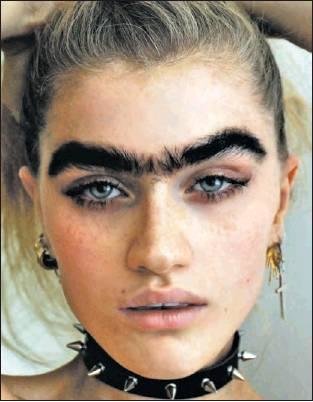What was Helen of Troy’s secret?
How did women in ages past check their appearances?
They picked up polished copper and bronze mirrors to apply homemade mineral paste makeup to make themselves beautiful.
A woman’s quest …
This item is available in full to subscribers.
Subscribe to continue reading. Already a subscriber? Sign in
Get 50% of all subscriptions for a limited time. Subscribe today.
Please log in to continueNeed an account?
|
What was Helen of Troy’s secret?
How did women in ages past check their appearances?
They picked up polished copper and bronze mirrors to apply homemade mineral paste makeup to make themselves beautiful.
A woman’s quest for beauty is ancient.
Beauty standards reflect how a culture defines beauty.
In ancient Egypt, shaved heads on men, women and children were considered beautiful. Hair was considered shameful, unclean and barbaric.
Wigs designed to cool the head were the fashion. Men who spent time in the sun and had red or bronzed skin were considered handsome.
Lighter skinned Egyptian women were considered beautiful.
Lighter skin meant privilege and wealth because you didn’t have to work in the hot sun.
The Spartan Queen, Helen of Troy, in the Bronze Age was said to be a woman so beautiful her husband launched a siege of Troy to get her back.
What were the beauty standards of that bygone era?
Beauty had 3 standards: Smart, good morals as defined by the culture and a full figured body.
Skinny was not stylish.
Red suns tattooed or painted on a woman’s face, white lead paint on pale skin and a half-shaved head were considered beautiful.
Hair left on the head was curled like long snakes.
Wide hips and white arms were fashionable. Redheads were considered to have had special powers.
Coal black color outlined the eyes.
Helen of Troy was said to be fair skinned and golden haired.
In a culture where dark hair and skin were normal, a pale, fair-haired woman was rare and considered beautiful.
In reality, Helen of Troy may have looked like a 21st Century science fiction movie character.
The Romans preferred light complexions with the help of white lead paint and chalk. Crushed mulberries and strawberries and later red iron powder were the lipsticks of the day.
Charcoal and oil created dark eyeshadows.
The ancient Greek and Roman women preferred the fashionable unibrow. If their eyebrows didn’t connect, they glued ox hair to connect them.
Sophia Hadijipaneli, a 2018 fashion model of Greek- Cypriot lineage, has decided to renew the uni-brow fashion trend. I wonder if she knows her ancient Greek ancestors already had that idea?
Europeans’ beauty preferences in the middle ages had women shave the eyebrows to accentuate the trending and stylish high forehead.
A women’s desirable size has vacillated from plump and round to skinny throughout the centuries.
Italians in 1400-1700 preferred full-bodied women, round stomachs and hips.
The Victorian era that ended in 1900 kept the plump woman’s figure but added a cinched waist.
The skinny, androgynous look was the rage of the 1920s but curvaceous hourglass figures were back in style a decade later.
The willowy thin figure returned in 1960s, athletic figures in 1980s and slim physiques again in the 1990s.
What does all this mean?
Fashion and beauty trends are fickle and inconsistent.
Why do we put so much emphasis on the latest style?
What works in one era is outdated in the next. Why not just choose the beauty standard that fits your present shape and preference?
I think I will skip the shaved head and tattoos and stick with what I like to wear, whether or not it's in current fashion.
Other items that may interest you










Comments
No comments on this item Please log in to comment by clicking here